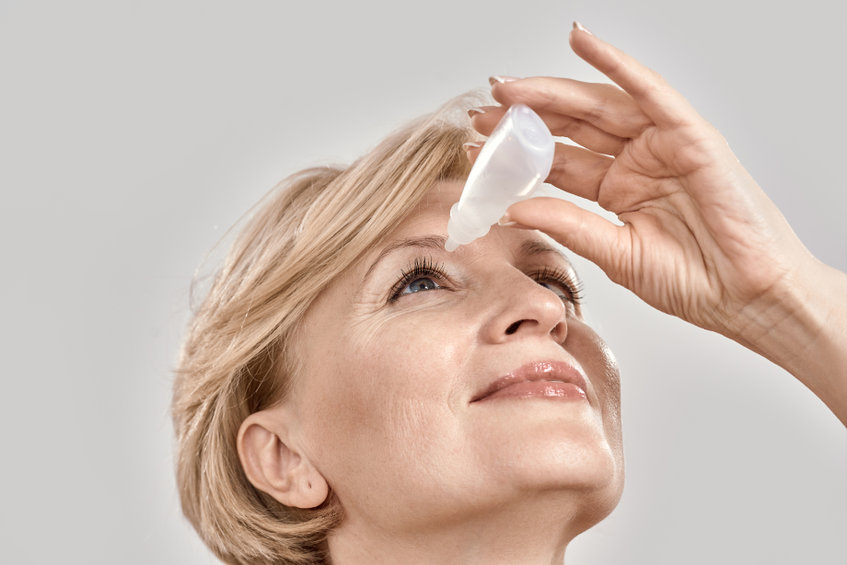Eye drops, prescription or otherwise, are used regularly world-wide to apply medication to the eye. Nearly all topical medications aimed at treating eye conditions are administered via a drop. Eye drops come in either a small bottle, typically 3 to 5 milliliters, or single use vials. Eye drops in bottles contain preservatives, aimed at preserving sterility and drug composition. Single use vials are typically reserved for preservative free formulas. Preservatives can irritate the surface of the eye. Preservative free formulations are less likely to cause irritation and other adverse reactions, especially when used frequently.
Eye drop bottles are labeled with the name of the contents, and the caps are also color coded. This helps patients not only identify their drops, but keep the different medications straight, as many patients are prescribed more than one drop for conditions like glaucoma. Eye drops are usually prescribed as one drop at a specific time or several times during the day. Over the counter eye drops can be used as needed or as specified by the package instructions.
Also read about Nose Spray for Your Eyes
Eye drops are administered by removing the cap, aiming the bottle toward the eye, and squeezing the bottle until a drop is released from the dropper tip. As straight-forward as that may sound, it requires a fair amount of steadiness, aim, and dexterity. I recommend the following procedure:
- Wash your hands
- Obtain a stable grip on the dropper using your dominant thumb and forefinger
- Using your non-dominant hand, gently pull the lower lid down to expose more of the eye’s surface
- Rest the hand holding the drop on your cheek or your other hand with the dropper tip approximately 1-2 inches from the eye, it is very important not to touch any part of the eye with the dropper tip to avoid contamination
- Look toward the bottle and squeeze until 1 drop is released onto the eye
- Gently close the eyes and keep them closed for approximately 30 seconds
If the drop misses, or does not land well on the surface of the eye, it is recommended to apply an additional drop. It is important to ensure an adequate amount of medication has reached the eye. Your doctor can call in additional refills as needed if the eye drop runs out earlier than expected.
In certain circumstances, such as in patients with arthritis or limited dexterity, accurately instilling eye drops can be difficult or even impossible. Products such as the AutoDrop and AutoSqueeze have been developed to address that issue. These products make it easier for patients to aim and instill their eye drops, which can improve compliance and thus outcomes. If you have questions regarding eye drops or their proper instillation, talk to your doctor. See the references below for additional information and instructions.
References:
https://www.owenmumford.com/us/medical-devices/eye-care/autodrop-autosqueeze












